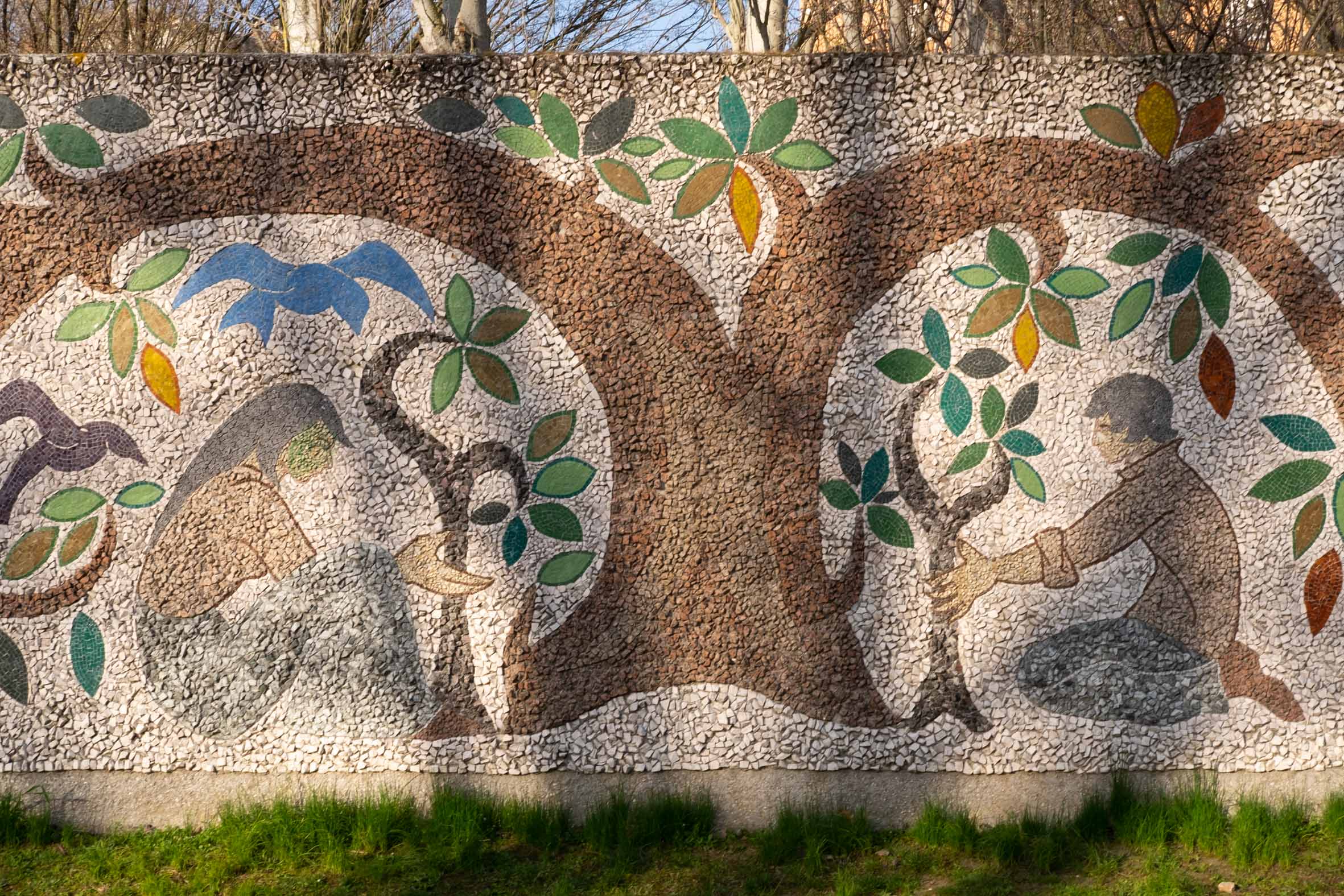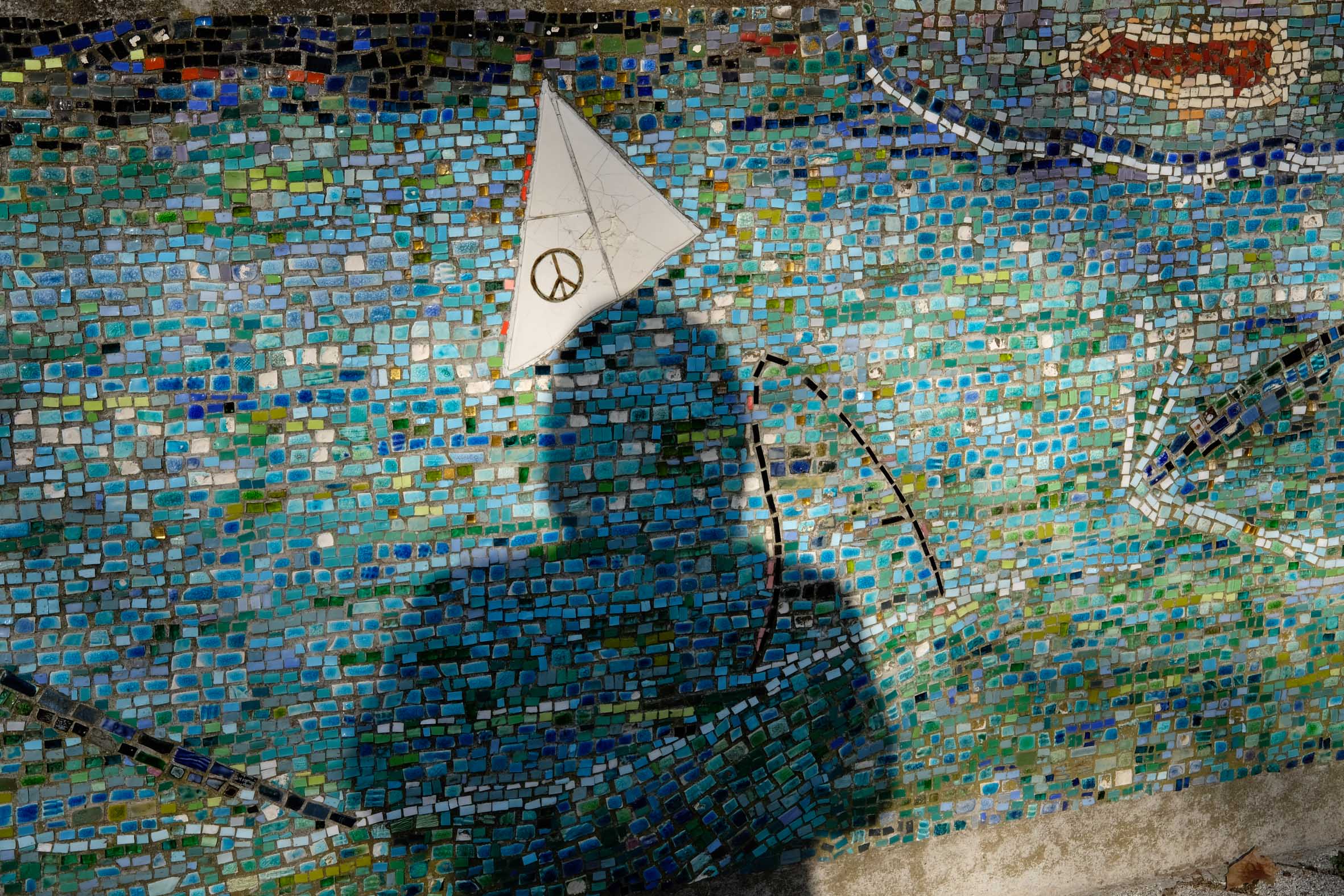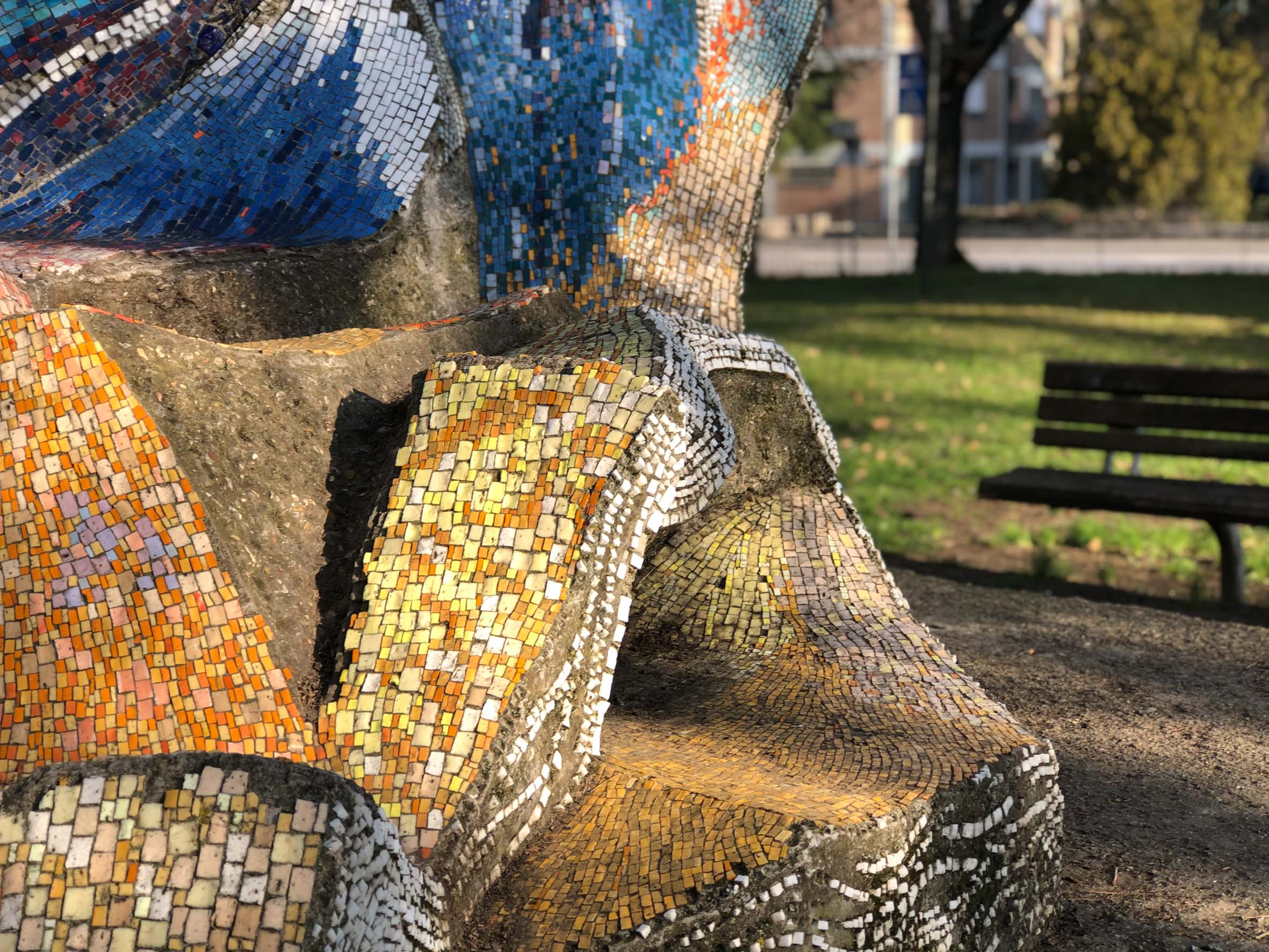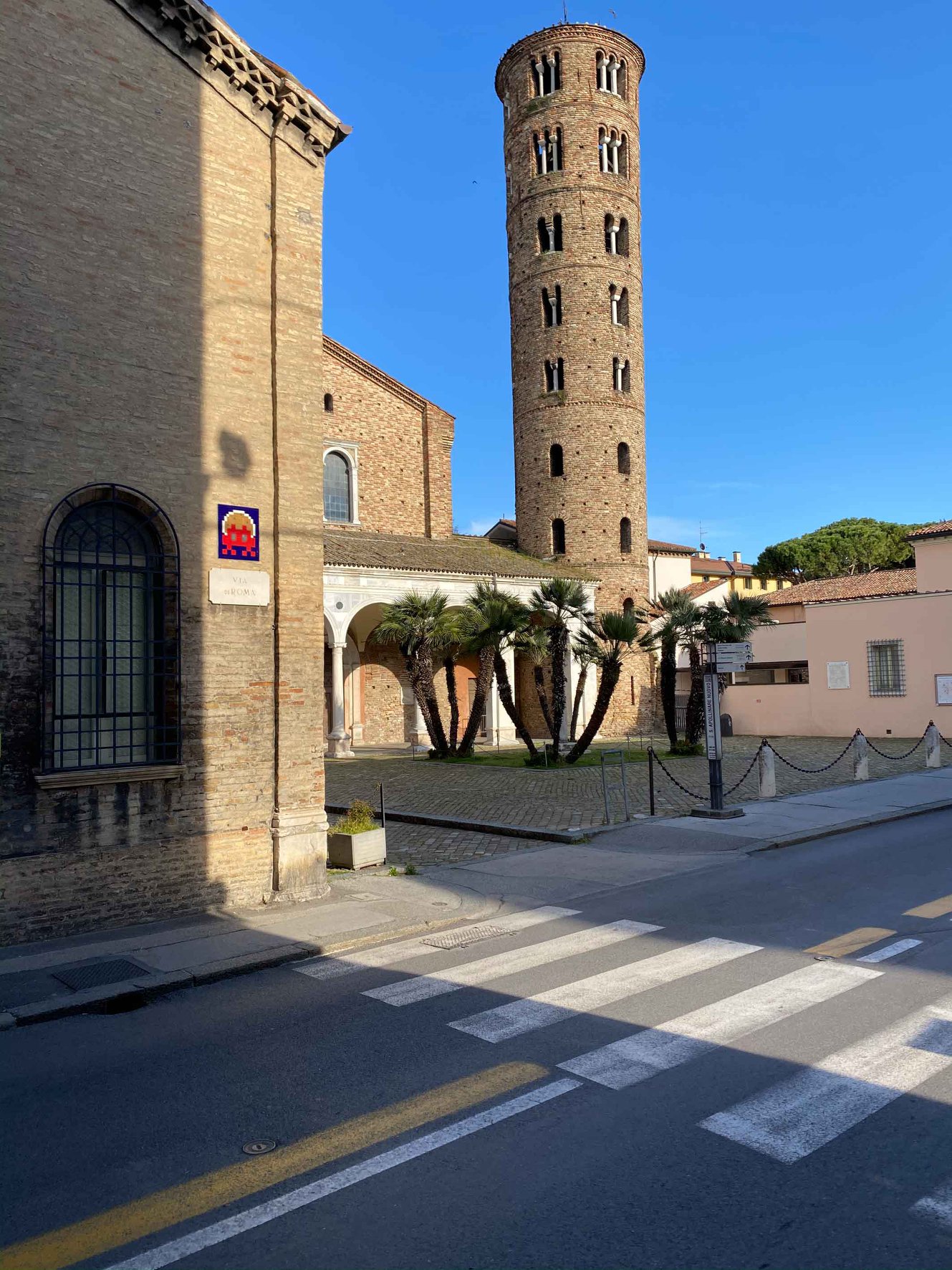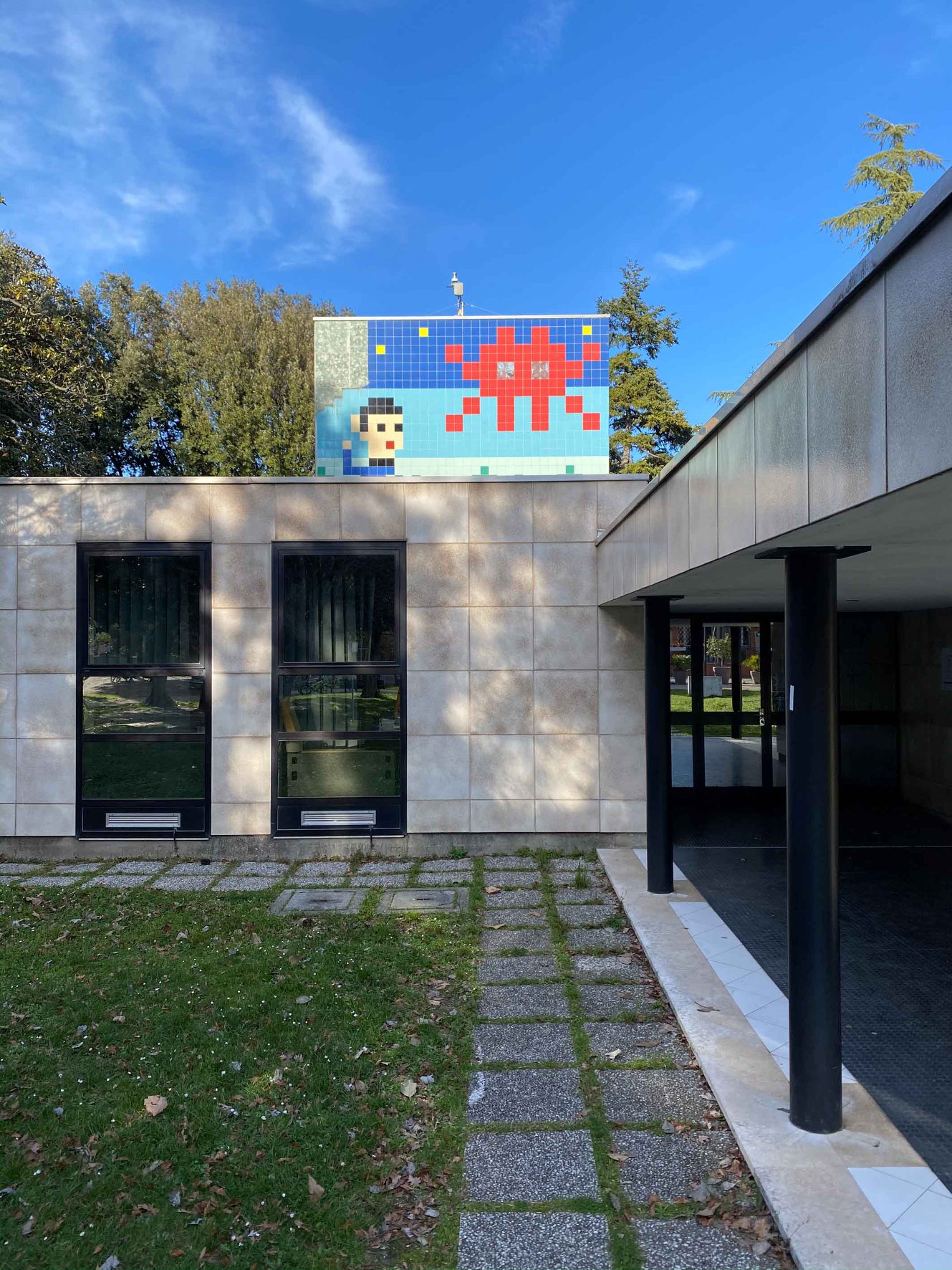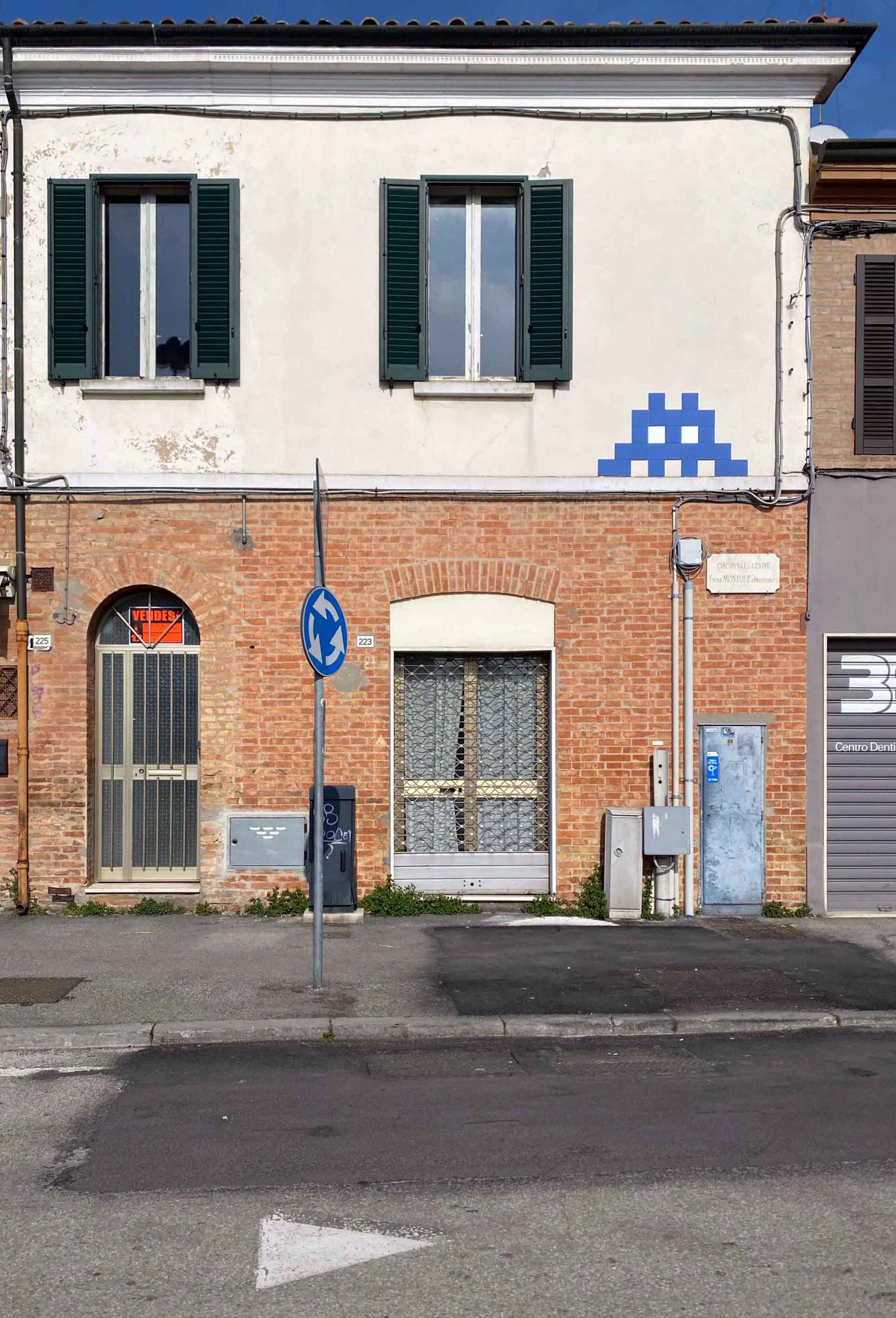The most ancient and better preserved mosaics of the late Roman and Byzantine history hide behind bare warm coloured, humble-looking walls. Mosaic has always been the key element which differentiates Ravenna from any other place, conferring it a unique and intimately majestic character, frozen in time.
Over the last 1600 years, the mosaic art has slowly made its way out in the open to shyly keep us company in our daily routes from one place to another within the city. It is enough to look around, change direction, and there are true artworks which – sometimes discreetly, sometimes imposingly – blend with the urban environment surrounding us.
When and how did they appear, which is their story and their message? Silvia Giogoli’s narration will reveal the answers for the social network project #travellingaroundthecorner
Silvia Giogoli was born, grew up, and lives in Ravenna. Here she has been passionately working as a tour guide since 2000. An art and food lover, untiring traveller, she has chosen a job which makes her feel like travelling even when she’s at home, meeting visitors coming from all around the world, true ambassadors of different cultures. Her approach to photography is naive and spontaneous, she prefers outdoor shots with saturated and bright colours.
Mosaic belongs to everyone
The mosaic in Ravenna has always been a reference point, kept safe inside sacred places, protected but almost hidden from the eyes of most. As if the mosaic had intertwined with the genetic code of the inhabitants, present but invisible. For centuries the technique has been handed down from one generation to the next but for a long time it has remained almost unchanged, closely linked to the ancient tradition, both in the symbolic meaning and in the material used.
In 1980 something extraordinary happened. Mosaic artists from all over the world gathered in a single large group: this is how the International Association of Contemporary Mosaicists was born, initiating an unstoppable creative evolution that has brought the art of mosaic outside of the box and barriers and towards a progressive integration with the urban morphology of the city, taking sculptural, architectural and furnishing forms. In the same year a unique project was launched; mosaic was in its spotlight with the creation of a real open-air museum. In 1988, “Parco della Pace” saw the light.
We are in the San Rocco district, just outside the town center, in a green area which runs through a residential neighborhood, here the mosaics give voice and shape to the theme of Friendship between Peoples thanks to the contribution of skilled local and international artists.
The eye is guided by the chromatic variations in a combination of nature and plastic material from the sparkling shades of melted glass to natural stones of various sizes.
Since then, year after year, the city and its surroundings have been enhanced with works of great artistic value, involving streets, squares, gardens in a kaleidoscope of lights and bright colors harmoniously integrated with the landscape, from the spiraling fountain Ardea Purpurea in Piazza della Resistenza inspired by the Phoenix, to the benches of the dialogue in Via Salara, the Social Sofa in Darsena district, the Jerusalem Tower in front of the Train Station, the road plates of the old town, the flowers of Linea Rosa, the great bale of golden hay Roto B in front of the MAR. Today the mosaic moves more nonchalantly, dares to go where no one would have thought it could have come, but it does so with the discretion and spontaneity that have characterized our city for centuries.
His nick name is Invader and he defines himself an UFA -Unidentified Free Artist. No one knows his face but we have all know the identity of his artworks. It is a popular French street artist who instead of paint with sprays and brushes chooses an unusual means of communication, more resistant and material, made of industrial ceramic tiles of various sizes and colors to give life to his creatures. Invader’s mission is to take art out of conventional and institutional places by giving freedom to the space invaders from the virtual screen, shaping them in a real texture through a pixel mosaic.
His invasion began in 1998 from Paris, to spread inexorably on the entire planet, from the great capitals to the most remote cities, from the deep sea to space, also conquering the International Space Station. Invader reaches the mosaic capital with a first wave in 2014 and a second wave in 2015 giving a new face to our city. He works with agility, acting almost totally undisturbed, with speed and determination he completes 40 works scattered on the territory of Ravenna.
In Ravenna, space invaders manifest themselves in various forms, sizes and expressions, integrating with surgical camouflage and maintaining a close link with its ancient artistic heritage. Invader manages once again in his intent, that of astonishing, making us reflect, discuss, and inviting us to stretch our gaze, in a physical and metaphorical sense. His art is accessible to all, can be loved, hated, can leave indifferent, is subject to the physiological attack of time and humanity but undoubtedly has already become part of our history.
